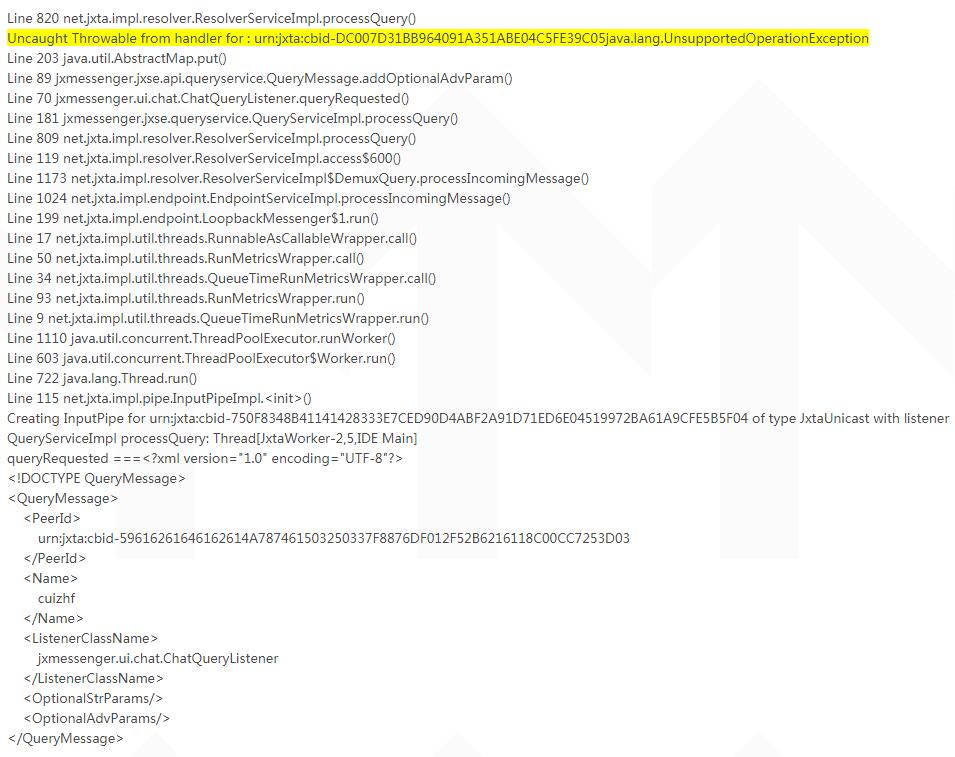您好,登錄后才能下訂單哦!
您好,登錄后才能下訂單哦!
這篇文章將為大家詳細講解有關Java中Collections.EMPTY_LIST與Collections.emptyList()的區別有哪些,小編覺得挺實用的,因此分享給大家做個參考,希望大家閱讀完這篇文章后可以有所收獲。
Collections.EMPTY_LIST返回的是一個空的List。為什么需要空的List呢?有時候我們在函數中需要返回一個List,但是這個List是空的,如果我們直接返回null的話,調用者還需要進行null的判斷,所以一般建議返回一個空的List。
Collections.EMPTY_LIST返回的這個空的List是不能進行添加元素這類操作的。這時候你有可能會說,我直接返回一個new ArrayList()唄,但是new ArrayList()在初始化時會占用一定的資源,所以在這種場景下,還是建議返回Collections.EMPTY_LIST。
Collections. emptyList()返回的也是一個空的List,它與Collections.EMPTY_LIST的唯一區別是,Collections. emptyList()支持泛型,所以在需要泛型的時候,可以使用Collections. emptyList()。
Collections.EMPTY_MAP和Collections.EMPTY_SET同理。
/**
* The empty list (immutable). This list is serializable.
*
* @see #emptyList()
*/
@SuppressWarnings("unchecked")
public static final List EMPTY_LIST = new EmptyList<>(); /**
* Returns the empty list (immutable). This list is serializable.
*
* <p>This example illustrates the type-safe way to obtain an empty list:
* <pre>
* List<String> s = Collections.emptyList();
* </pre>
* Implementation note: Implementations of this method need not
* create a separate <tt>List</tt> object for each call. Using this
* method is likely to have comparable cost to using the like-named
* field. (Unlike this method, the field does not provide type safety.)
*
* @see #EMPTY_LIST
* @since 1.5
*/
@SuppressWarnings("unchecked")
public static final <T> List<T> emptyList() {
return (List<T>) EMPTY_LIST;
}
第二行是很不起眼的一條異常信息,不知為何沒有把整個錯誤堆棧輸出。
一開始沒有注意到這條異常信息,于是設斷點,調試,結果每次執行幾句就莫名其妙地轉入ThreadPoolExecutor中執行。
最后注意到上面的異常信息后,發現對一個類型為Map的成員變量初始化有問題:
protected Map<String, String> optionalStrParams = Collections.emptyMap();
如此修改:
protected Map<String, String> optionalStrParams = new HashMap<String, String>();
我的本意是初始化為一個空的Map,EmptyMap在此場景下不合適。
關于“Java中Collections.EMPTY_LIST與Collections.emptyList()的區別有哪些”這篇文章就分享到這里了,希望以上內容可以對大家有一定的幫助,使各位可以學到更多知識,如果覺得文章不錯,請把它分享出去讓更多的人看到。
免責聲明:本站發布的內容(圖片、視頻和文字)以原創、轉載和分享為主,文章觀點不代表本網站立場,如果涉及侵權請聯系站長郵箱:is@yisu.com進行舉報,并提供相關證據,一經查實,將立刻刪除涉嫌侵權內容。